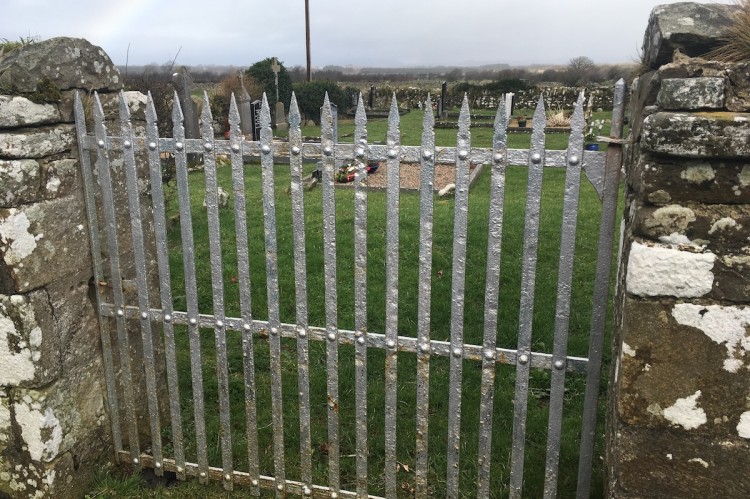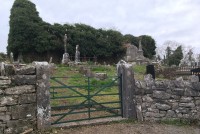Graveyards are made and maintained by the living, as sacred places to the memory of the beloved dead.
And the social history of a parish is wrapped up in it's graveyards.
By studying graveyards we can tell who the big landowners were; who had a middling farm and who had none. We can identify the trades families engaged in. And one of the most commonly encountered trades is that of blacksmith. For graveyards, blacksmith's made iron crosses, grave surrounds, and put together grave railings. But mainly blacksmiths made the iron gates that close-off the sacred space.
Off the top of my head, maybe half to a quarter of all Irish rural graveyards still have their original early 19th century iron gates. For those people of the Irish diaspora whose family members left Ireland after the 1820s it probably means their ancestors may have used the same gates that stand in many graveyards today. There are plenty of published accounts of parish committees purchasing, and having erected, gates from the 1820s onwards. Examinging nineteenth century legislation on the enclosure of graveyards the most effective act seems to have been the 1847 Cemeteries Clauses Act which stipulated
Every part of the cemetery shall be inclosed by walls or other sufficient fences of the prescribed materials and dimensions, and if no materials or dimensions be prescribed, by substantial walls or iron railings of the height of eight feet at least. |
Over the next few months we will explore graveyard gates and learn more about them along the way. For now, here are a number of iron gates from Sligo graveyards, which were recorded as part of a Heritage Council & Sligo County Council training programme that we ran in 2017.
If any of the Sligo teams are reading this and have more detail on the gates shown please email john@historicgraves.com to share your knowledge.









